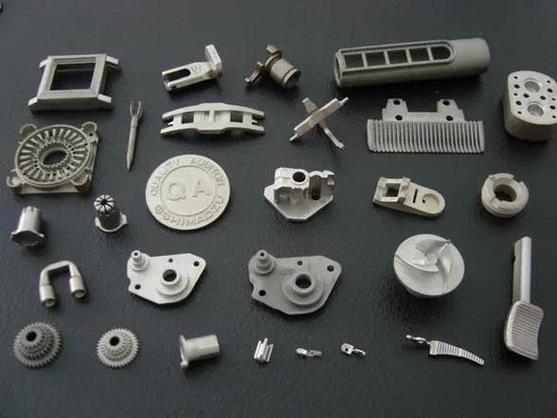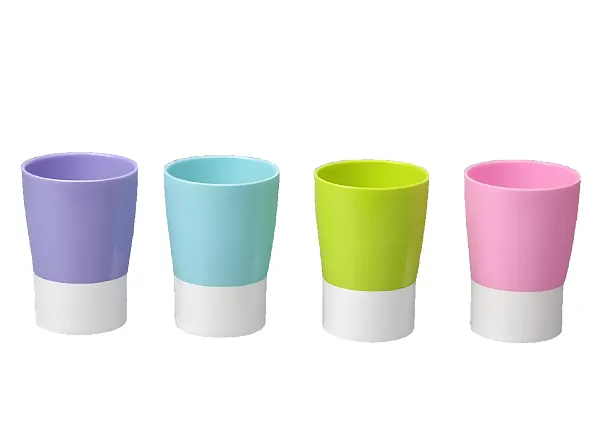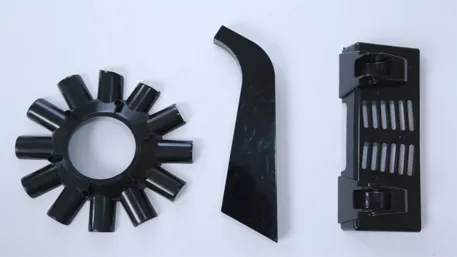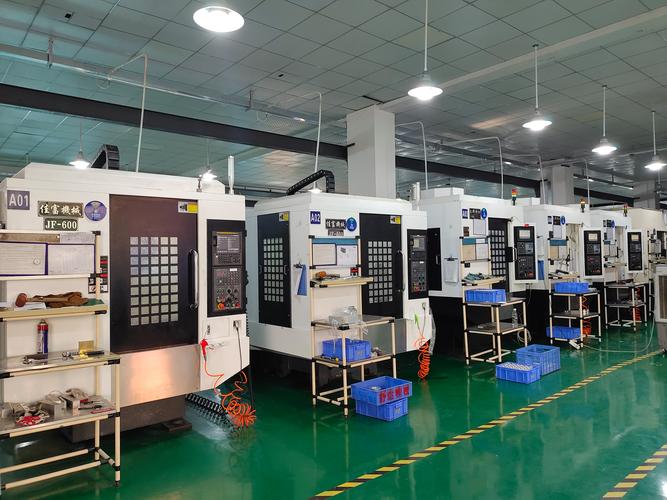Metal Injection Molding (MIM) is a hybrid manufacturing process combining plastic injection molding and powder metallurgy. It uses metal powder mixed with a binder to create a feedstock, which is injected into molds, then debound (binder removed) and sintered (heated to fuse particles). MIM produces complex, high-density metal parts with tight tolerances, ideal for small, intricate components.
Detailed Analysis of Metal Injection Molding
1. Core Technologies
MIM relies on specialized technologies to bridge molding and metallurgy:
- Feedstock Formulation: Metal powder (typically 1–20 μm particle size) is mixed with a binder (waxes, polymers) in a 60:40 (metal:binder) ratio. The binder acts as a carrier, making the mixture flowable for injection.
- Injection Molding Machines: Modified plastic injection machines with heated barrels (150–200°C) inject feedstock into molds under pressure (50–200 bar). Molds, often made of tool steel, have cavities matching the part’s final shape (plus sintering shrinkage allowances).
- Debinding Systems: Binder is removed via solvent extraction (dissolving waxes) or thermal debinding (heating to 400–600°C), leaving a porous “brown part” with ~60% density.
- Sintering Furnaces: Parts are heated to 80–90% of the metal’s melting point (e.g., 1300–1400°C for stainless steel) in a controlled atmosphere (argon or hydrogen). This fuses particles, increasing density to 95–99% and shrinking the part by 15–20%.
2. Manufacturing Process
MIM follows a multi-step workflow:
- Feedstock Preparation: Metal powder (e.g., stainless steel, titanium) is blended with binders in a mixer, then pelletized for easy handling.
- Injection Molding: Pellets are melted in the machine’s barrel and injected into the mold, filling cavities to form a “green part” (soft, binder-rich).
- Debinding: The green part undergoes solvent or thermal debinding to remove ~90% of the binder, leaving a fragile brown part.
- Sintering: Brown parts are heated in a furnace, causing metal particles to bond. The part shrinks uniformly, reaching near-full density and strength.
- Finishing: Optional steps include machining (for tight tolerances), heat treatment (to harden), or plating (e.g., nickel coating for corrosion resistance).
3. Materials Used
MIM works with a range of metals and alloys:
- Stainless Steels: 316L (corrosion-resistant, medical/automotive), 17-4 PH (high strength, aerospace).
- Alloys: Titanium (lightweight, biocompatible for medical implants), nickel-based superalloys (heat-resistant, aerospace).
- Specialty Metals: Tungsten (high density, radiation shielding), copper (conductive, electrical components).
- Low-Alloy Steels: For structural parts requiring strength, such as gears or brackets.
4. Types of Products Produced
MIM excels at small, complex parts:
- Medical Devices: Surgical tools, orthopedic screws, and dental implants with intricate geometries (e.g., porous surfaces for bone integration).
- Aerospace Components: Fuel injector nozzles, sensor housings, and lightweight brackets with tight tolerances.
- Electronics: Connector pins, heat sinks, and watch components (e.g., gears, cases) requiring precision and conductivity.
- Automotive Parts: Turbocharger components, transmission gears, and sensor housings—small parts with high strength demands.
5. Key Applications & Industries
MIM serves critical sectors:
- Medical: Producing biocompatible parts (titanium implants, surgical instruments) with complex shapes that are hard to machine from solid metal.
- Aerospace & Defense: Creating lightweight, high-strength components (e.g., missile guidance parts) where material efficiency is key.
- Consumer Electronics: Making small, precise parts (smartwatch gears, smartphone camera components) at scale.
- Automotive: Mass-producing durable, complex parts (e.g., fuel system components) that reduce vehicle weight and improve efficiency.
6. Common Scenarios & Advantages
MIM is ideal for scenarios such as:
- Complex Geometries: Parts with undercuts, holes, or thin walls (0.2–2 mm) that are costly or impossible to machine—e.g., a 5mm-diameter gear with internal teeth.
- Small Parts, High Volume: Producing 10,000+ small parts (e.g., 2mm medical screws) cost-effectively, as MIM avoids the waste of machining from solid stock.
- Material Efficiency: Using ~95% of the metal powder, compared to machining (which often wastes 50–70% of raw material).
- Material Versatility: Creating parts from high-performance alloys (e.g., titanium) that are difficult to forge or machine.
Limitations include high initial tooling costs, size restrictions (parts >100g are costly), and longer lead times (due to sintering). However, its ability to combine complexity, precision, and scalability makes it irreplaceable for small, intricate metal parts.
In summary, MIM bridges the gap between plastic molding’s complexity and metal’s strength, enabling innovative designs in industries where small, high-performance parts are critical.







